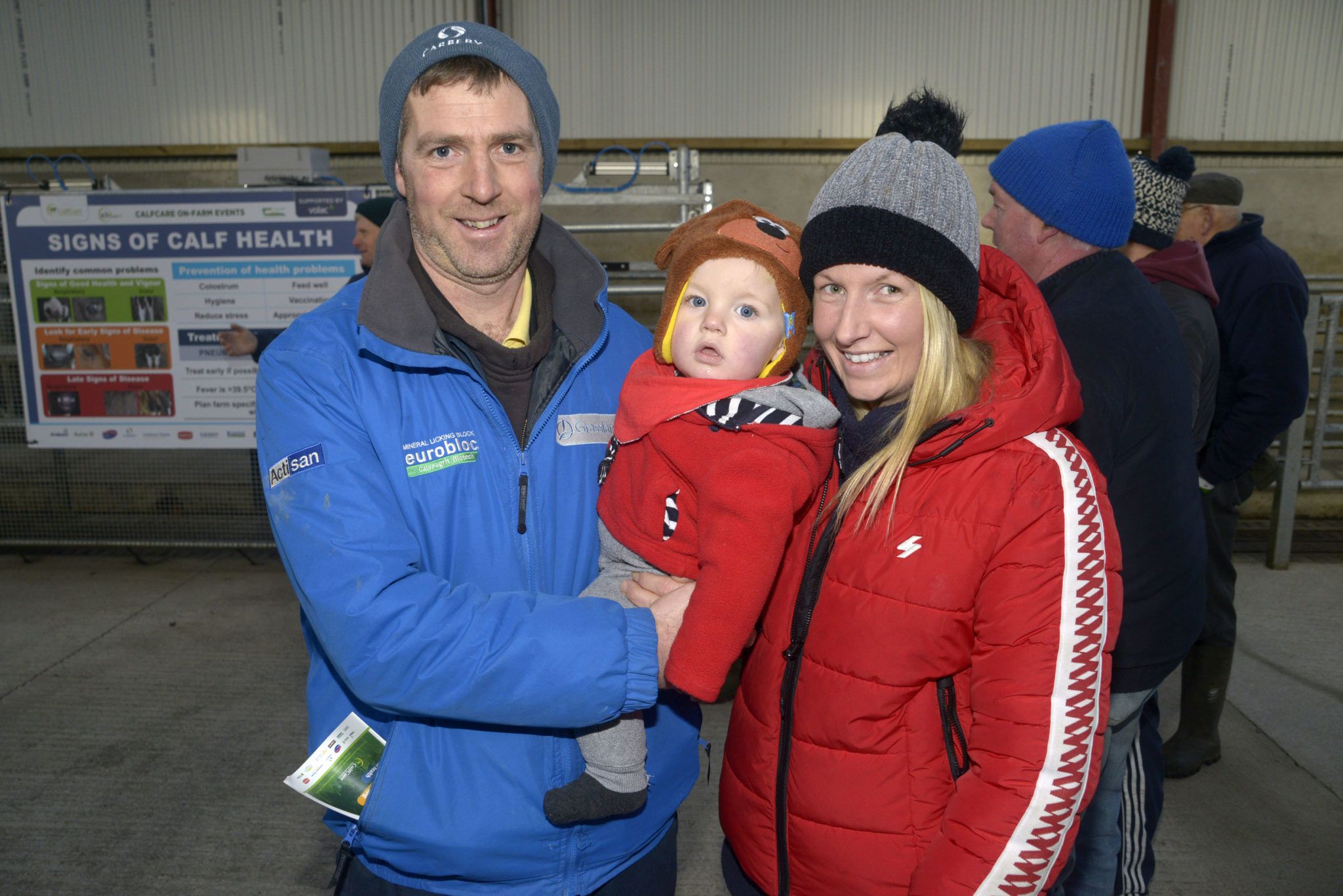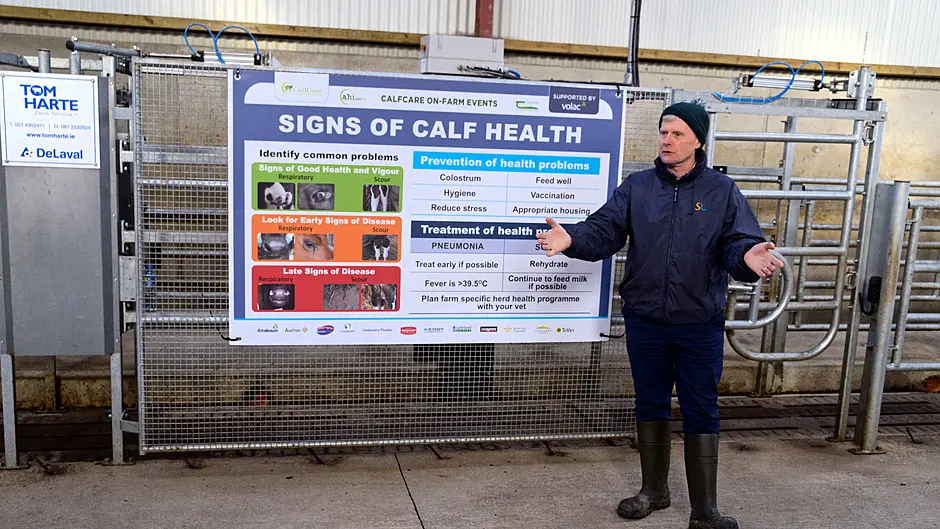WITH farmers around West Cork gearing up for calving season, an event was held on a Ballineen farm to outline the best practices in calf rearing to promote success and profitability.
It took place on the farm of John Cullinane, Shanaway, Ballineen, and it’s one of 15 events, titled CalfCare 2023, Back to Basics, organised by Animal Health Ireland and Teagasc, and supported by Volac Ireland, in conjunction with the major dairy co-ops.
 Joe, Johanna & Darragh Crowley, Ballineen at the event
Joe, Johanna & Darragh Crowley, Ballineen at the event
Calf health depends greatly on the quality and management of the calf in early life, particularly in the first six weeks, and key performance indicators when rearing calves and strategies to reduce mortality and morbidity were addressed.
 The event which attracted a large crowd.
The event which attracted a large crowd.
Issues like knowing the correct number of calves to rear in a particular shed, or pen, is important to calf performance, and the event explored alternative housing for farms that have more calves than the optimum number.
Additionally, the latest information was available on calf comfort and alternative housing options.
With the growing interest in feeding calf milk replacer and a positive milk price, feeding and management of calf milk replacer were up for discussion, with experts on hand.
 Tim Coffey from Ballineen with Tadgh and Cian Crowley from Lyre, Clonakilty at the event.
Tim Coffey from Ballineen with Tadgh and Cian Crowley from Lyre, Clonakilty at the event.
Weaning of calves was addressed, and how to minimise the risk of summer scour syndrome, which hinders calf performance on many farms was also discussed.
George Ramsbottom, dairy specialist, Teagasc, said the latest research shows that once calves are well reared on milk, or milk replacer, and carefully transitioned to solid feeds prior to weaning, they can be weaned at 15% of mature live weight with no impact on subsequent performance, provided that their post-weaning management is excellent.








